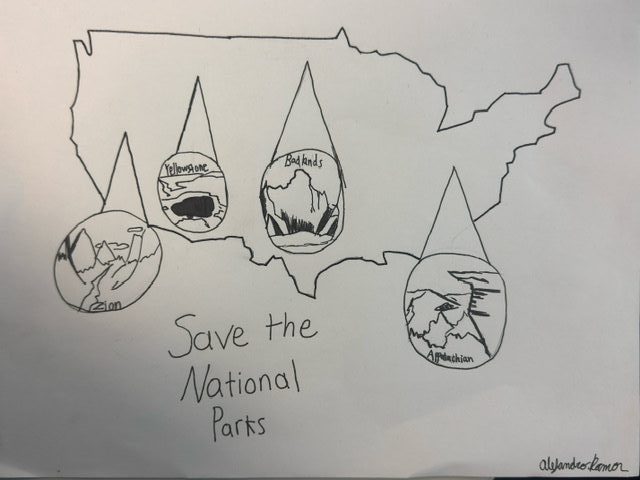Growing up, I was that type of gifted kid. The one with a college-level reading comprehension score at 10. The one who could read a 700 page book in a few days and recite everything that happened in it. The one with a ridiculously heavy book bag because they were carrying five books in it at a time. Even when I got my first phone in middle school, I was still the one choosing to read on the bus rather than browse social media.
These days, I spend an hour reading 10 pages from my history textbook. Continually needing to take breaks to preserve my patience. Only recently have I gotten back into reading casually. Sora is a great reading app for H-F students, as e-books are much easier to carry around than physical books. However, the Sora catalog is too limited to be a viable replacement for the physical library.
My experiences are not universal. After recording over 160 students of H-F, many could not recall the last time they finished a book not assigned to them. It seems like so many have turned their backs on reading. Why is that?
Before you say it, It’s not because of “that dang phone”. That’s the lazy answer crafted by the older generation to further shame young people for knowing how to use a computer. As stated before, it was because of my phone that I was able to rediscover my love of reading. It’s not that younger generations are incapable of enjoying literature, when asked if they enjoyed the last book assigned to them, many students expressed an appreciation for what they read. It’s not even a problem limited to the younger generation. Ask your parents or guardian the last time they casually read and finished a book, I’m sure it’s been a while.
Then why don’t we read anymore? English teacher Jeffery Corso explained it best, “The reason I believe most teenagers don’t read today is that someone destroyed their love of reading.”
Those who remembered the last book they casually read responded with books such as Harry Potter, Diary of a Wimpy Kid, Big Nate, The Magic Treehouse and other very fun and enjoyable books. Stories such as The Crucible, Fahrenheit 451, The Great Gatsby and Macbeth are undoubtedly brilliant pieces of literature with themes that resonate to this very day. But, the constant analyzing and annotating leaves a bad taste in the mouths of students, and associates those books with boring, stressful experiences that turn young people away from reading them again.
When asked about annotating, I saw a lot of repeated sentiments from students. “I hate it”, “Time consuming”, “Tedious”, “Pointless”, and at least five responses that just said “No”. An unexpected amount of students expressed discomfort with writing inside the book. Preferring the text to remain in an unblemished state. Annotating can be a drag, but I also understand that annotating can help students better remember the text.
“…Annotations are a really helpful tool for making meaning of what you read…” English teacher Sarah Pittman spoke on annotating, “[Annotations] really aren’t supposed to be for your teachers, they’re supposed to be for you and to help you figure out what you’re reading…”
“The way we should view annotation is that it’s the conversation between the reader and the text… if we try to systematize a conversation it makes it hard for some individuals who don’t think that way…” Corso explained.
How could the school change the way we go about reading? The two English teachers had some very unique ideas on the matter.
“We need to get student choice in books,” Corso said.
“I would give my students more choice in what they read and more time to read independently things that they enjoy,” Pittman said.
“We need to have classroom libraries, dozens of books inside each teacher’s room. They’re new books, they’re young adult books, they’re fun books…”
“It’s tricky as a teacher because we have to teach certain things and certain skills… it’s hard to build those into a bunch of different books.”
“…We should spend at least 15-20 minutes of every class with students selecting a book one day and just 15-20 minutes reading every single day of that book. There’s no expectations, if you read one page, if you read 20 pages…”
“I think it’s important to have one text that brings all of us together, but I would love for my students to have more time to read things that they enjoy.”
“There’s no essays, there’s no assignments with it. It’s just about rekindling the joy of reading… Because when we do get to something that we need to read for class, students will be more engaged with it because they’ll have already spent time reading. So it doesn’t seem like a chore anymore…It’s just continuing something they enjoy.”
“What really helps you as a reader is reading. The more you read, the better you get at it and the more you start to actually enjoy it.”
Despite the differences, one idea repeats: choice. Imagine having time in class to independently read what you want to read. Granted, the school can’t change what is required by the school board. Class readings, annotating and essays aren’t going anywhere anytime soon. However, bringing more joy to English class is valuable in building back the enjoyment of reading for teenagers and for future generations.







